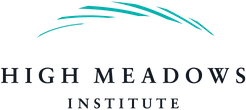The pandemic and growing climate crisis have thrown into sharp relief the critical role large firms now play in society, not just as economic entities, but as key social institutions expected to work with and alongside government to address the myriad of systemic challenges now facing us, from climate change to inequality. In his 2018 letter to CEOs, Larry Fink, CEO of BlackRock, the world’s largest institutional investor globally, summarized this new role for business well: “We… see many governments failing to prepare for the future…As a result, society increasingly is turning to the private sector and asking that companies…
For almost 50 years now, I have been active in the world of responsible investment (otherwise known as sustainable investment, ESG integration, and impact investment, among other things). Its growth, especially since 2010, has surprised me. Assets under management in this once obscure discipline are estimated at as much as $37.8 trillion by year-end 2021.[i] Around the world, the field is exploding with new products, a deluge of data and heightened recognition from regulators. I am particularly surprised at these developments given that since its earliest years, its practitioners have faced a barrage of criticism. The three prongs of these…
To read the headlines, you could easily be forgiven for thinking that ESG integration in capital markets is now fully underway, as the value of global assets applying environmental, social and governance data to drive investment decisions has soared to $40.5 trillion and now represents more than a third of the $95 trillion equity market in 2020.
Some people say the solution to the ESG challenge is to embed social-purpose statements into corporate charters, and that this will oblige companies to consider all stakeholders and to measure and report on their social effect. This sounds good – but as we engage business in trying to meet the sustainability challenge, is corporate structure the right place to focus?
When modern portfolio theory arrived on the scene in the 1950s, it was considered revolutionary. It changed the way that investors perceive risk, return and portfolio management and permanently altered the investing world and financial markets.
“It’s time for a new way to think about investing, one that can contend with the complex challenges we face in the 21st century,” authors William Burckart and Steven Lydenberg write in the introduction to their new book, 21st Century Investing: Redirecting Financial Strategies to Drive Systems Change.
Let’s be clear about mandated standards for financial and sustainability reporting, especially what they are and what they are not. Standards are a social construct. They are a consensus about how to represent a company’s performance. They are a baseline for analysis and dialogue that can be supplemented in many ways.
What are the biggest threats to an investor’s portfolio these days? Climate change impacts all investors across all asset classes. Income inequality threatens to polarize politics, paralyze governments, destabilize democracies, and lead to nationalistic populism, trade wars and even geopolitical conflicts.
Critics claim that today’s companies and financial markets are severely out of balance and are focused on short-term quarterly results and raising their stock price via share buybacks rather than investing for long-term success. A quick scan will generate plenty of examples to confirm that point, for example Kraft Heinz, but is this the reality?
Everyone has an opinion about short-termism. It has been blamed for underinvestment in infrastructure, basic science, human capital, and research and development.
